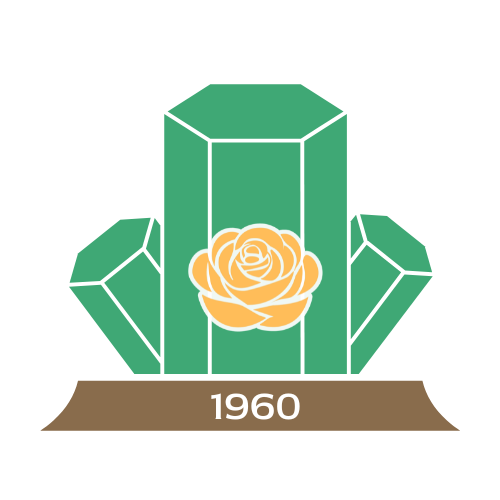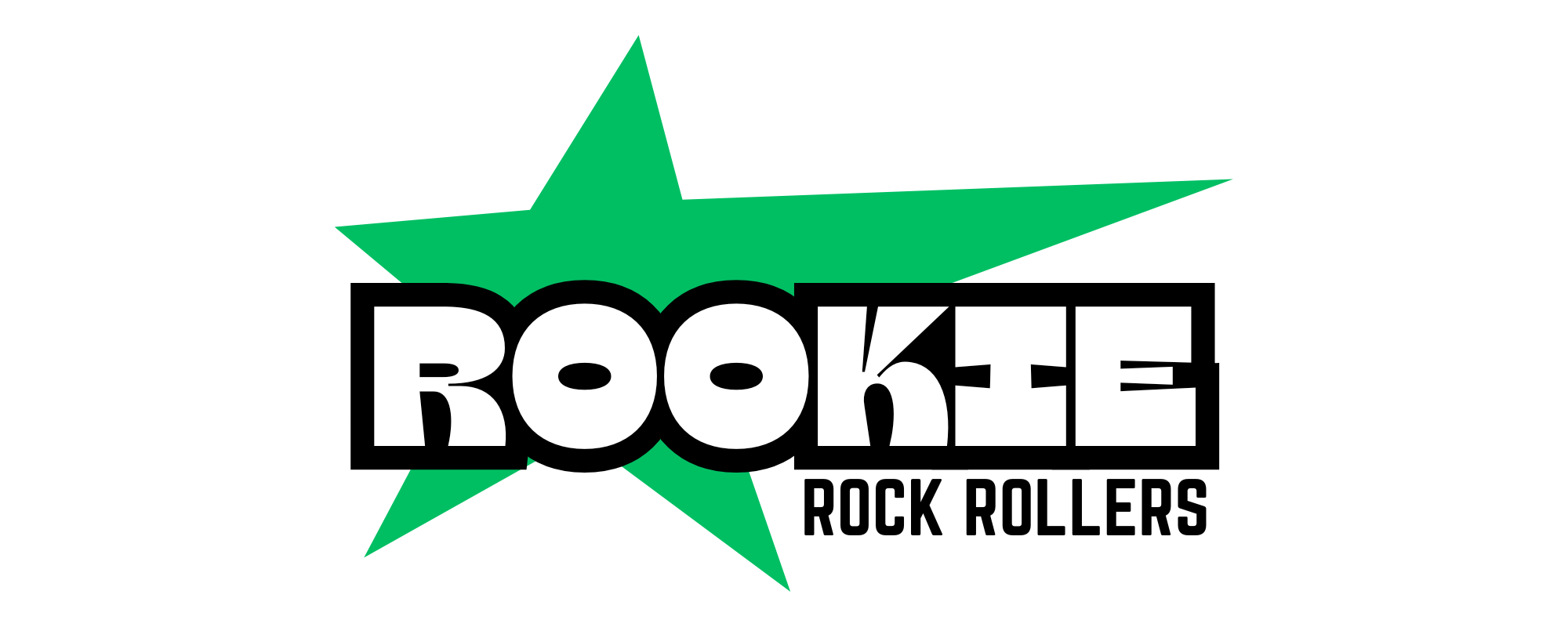Welcome to the Rookie Rock Rollers!
The Roseville Rock Rollers Gem and Mineral Society's youth program is designed to spark curiosity and inspire a love for geology, minerals, and lapidary arts in children and teens. We offer a range of fun and educational activities tailored for young rock enthusiasts.
Rookie Rock Rollers Meetings
The Rookie Rock Rollers meetings consist of a 30-minute lesson followed by a 45-minute craft activity. These sessions are designed to engage young minds with interactive and hands-on learning experiences in geology, mineralogy, and lapidary arts.
The meetings are coordinated and by our Juniors Director, Kelsey Guymon.
Guests are welcome to attend!
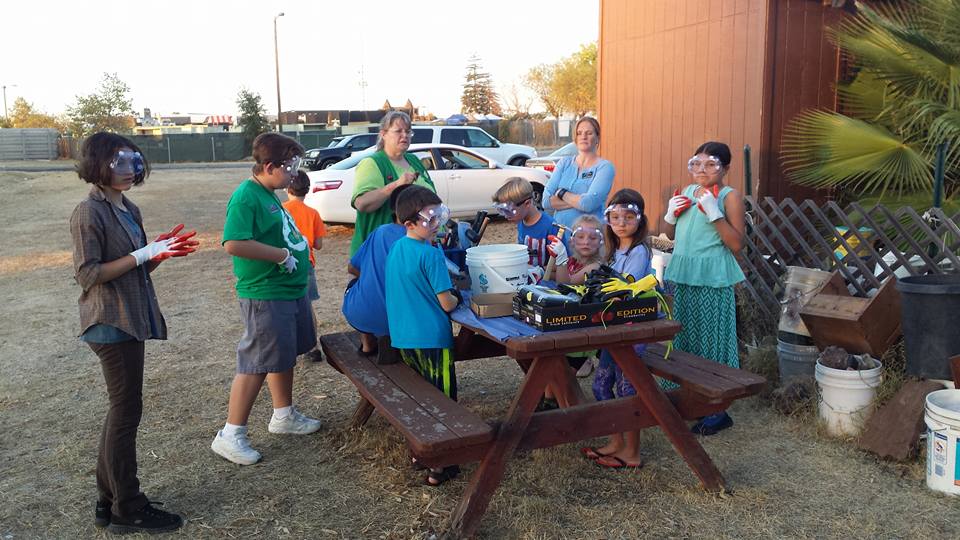
Second Tuesday of Each Month
5:30 PM - 6:45 PM
Roseville Rock Rollers
Lapidary Shop
L Lot @the Grounds
200 Corporation Yard Road
Roseville, CA 95678
Rookie Rock Roller Agenda
Rocks and minerals
In the coming months, our Rookie Rock Rollers will work toward earning the Future Rockhounds of America (FRA) Rocks and Minerals badge. Junior members will learn to identify common minerals, explore the three main rock types, and discover the characteristics that set minerals apart.
More information on FRA and details on badges available can be found below.
-
We Need Volunteers
To make our JRA Badge program a success, we’re asking for your help! Volunteers are needed to:
- Share knowledge about earth science and art.
- Bring samples or tools to showcase during our lessons.
- Provide demonstrations to bring the activities to life.
If you’re able to assist, please contact the Juniors Director! Your contributions can make a big difference in inspiring the next generation of rockhounds.
Junior Lapidary Sessions
Fee: $5 per session, plus material costs
Specifically designed for our Junior Society members, the Juniors' Saturday Session offers a fun and engaging environment for kids to explore lapidary arts. These sessions provide access to tools and materials appropriate for junior members, with supervision and guidance from our instructors. It's a fantastic way for children to develop new skills, express their creativity, and discover a lifelong passion for rocks and minerals.
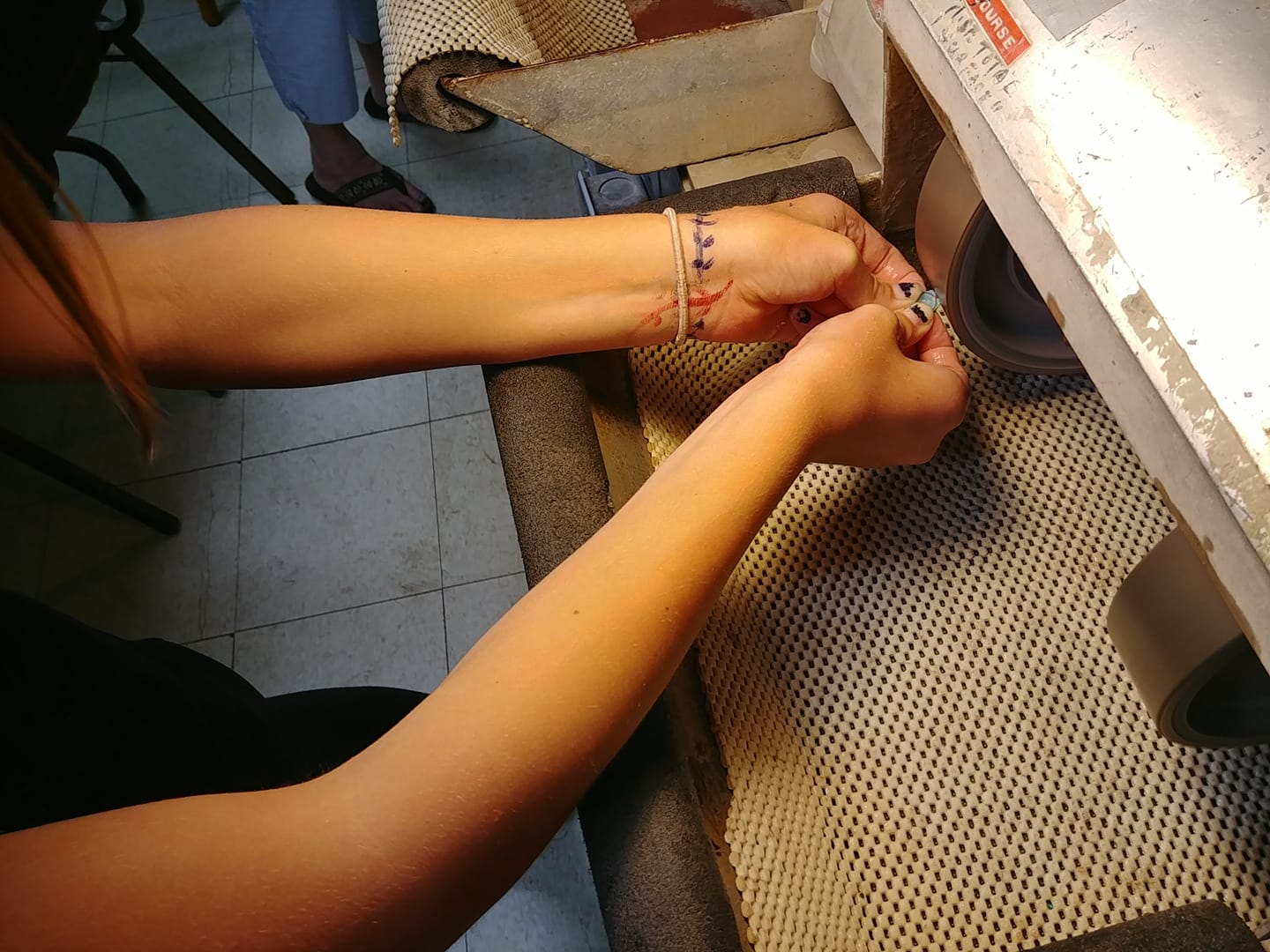
Saturday Sessions
1:00 PM - 4:00 PM
Roseville Rock Rollers
Lapidary Shop
L Lot @the Grounds
200 Corporation Yard Road
Roseville, CA 95678
-
Registration Process
Junior Saturday Sessions are supervised by Les Holbrook, who assists our Juniors Director, Kelsey Guymon, to ensure a fun and safe learning environment for all junior members.
RSVP: To register for a Junior Saturday Session, please email Les Holbrook.
Payment: By check payable to Roseville Rock Rollers or cash when you attend the session.
Please Note: Please arrive on time as the session will begin promptly. -
We Need Volunteers
We’re looking for creative individuals to help with upcoming hands-on sessions!
Volunteers can assist by:
- Sharing their expertise in lapidary arts and crafts.
- Helping with setup and guiding participants during the class.
If you have skills or supplies to share, we’d love your support to make these classes a success. Together, we can inspire creativity and junior involvement!
Saturday Session Schedule
-
Dream Catchers
January 31, 2026 at 9:45 AM
Maidu Museum & Historic Site
1970 Johnson Ranch Dr, RosevilleWe will participate in a guided tour designed to meet the Stone Tools & Art Badge requirements, exploring stone age tools, grinding rocks, Indian baskets, clay making, arrowheads, and other aspects of early Native culture. Please arrive on time, as the tour will begin promptly and last about 1½ hours. Juniors should bring a camera and notepad for sketching Petroglyphs. Some activities take place outdoors, bring an umbrella if it rains. Families may bring lunch to enjoy afterward, if weather permits. Adults are welcome to attend, but attendance is limited to 60 people.
Cost: $5
Please Note: Adult members are welcome to attend, but must RSVPs in advance.
Join the Rookie Rock Rollers
The Rookie Rock Rollers offers numerous benefits that go beyond just learning about rocks and minerals. Our youth program is designed for school-age children to provide educational enrichment, hands-on experience, and a sense of community and friendship. Junior members will develop critical thinking and observation skills through engaging activities and field trips. They will have the opportunity to explore the fascinating world of geology and lapidary arts in a supportive and fun environment, making lasting memories and friendships along the way.
At least one parent or guardian must be a member of the Roseville Rock Rollers to ensure family involvement and support.
-
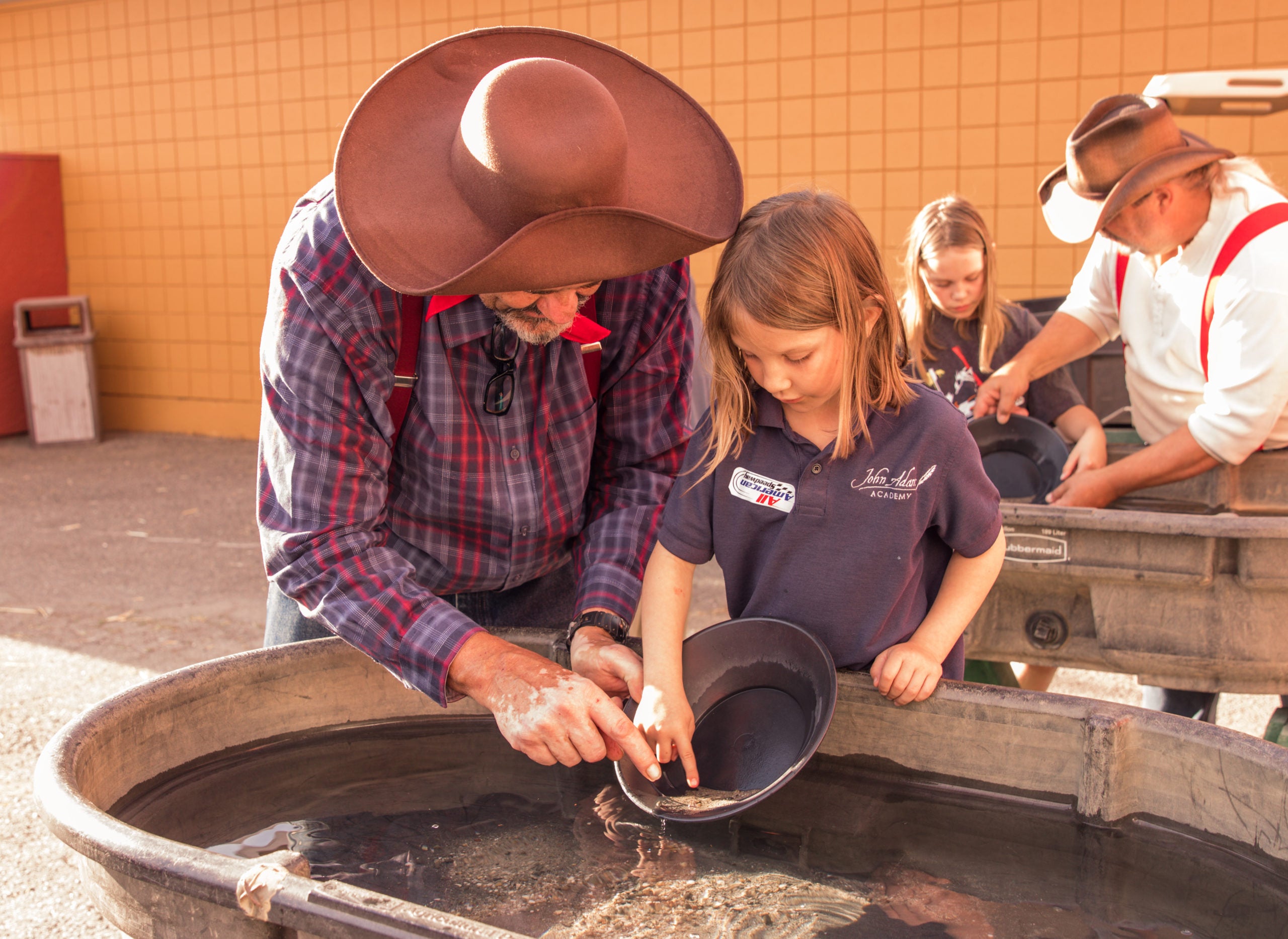
Field Trips
Field TripsExploration Adventures: Visit local caves and gold mine tours.
Hands-On Experience: Collect rocks and minerals at basic rock collecting sites close to the area.
Family Friendly: Parents and guardians are welcome to join.
-
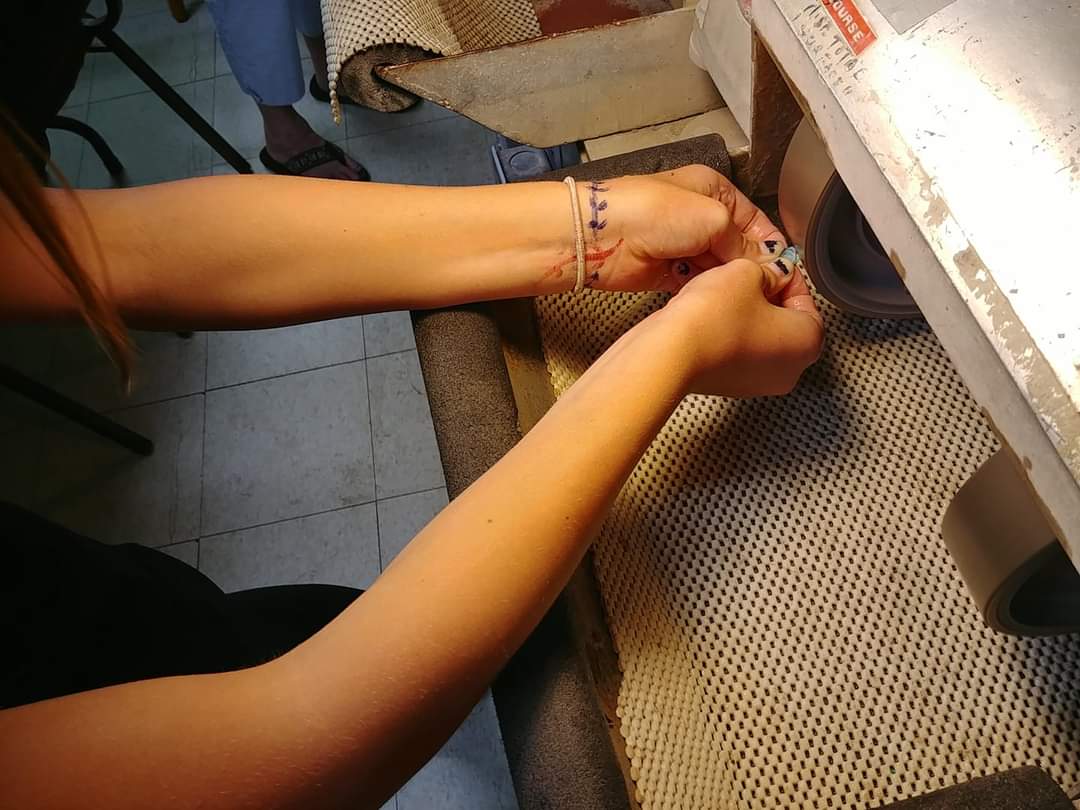
Lapidary Shop
Lapidary ClassesCabochon Classes: Introduction to stone cutting and polishing.
Open Sessions: Hands-on practice and creative freedom.
Mineral Identification: Learn to identify common rocks and minerals.
-
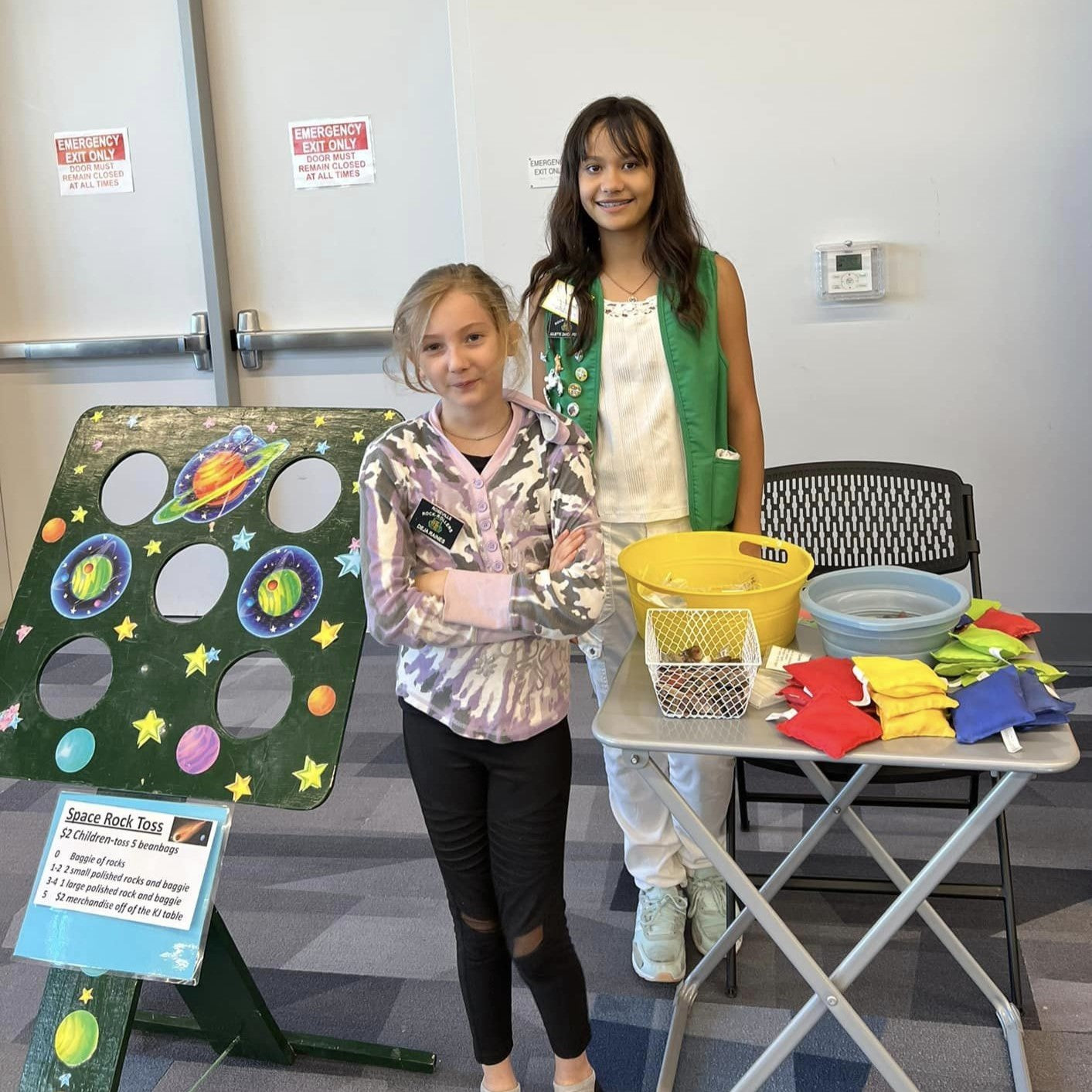
Annual Events
Kids JunctionJuniors Presentation: Display collections and projects to the membership.
Gem & Mineral Show: Volunteer and participate at Kids' Junction.
Ice Cream Social: Enjoy a fun gathering with sweet treats.
Future Rockhounds of America
American Federation of Mineralogical Societies
The Future Rockhounds of America (FRA) is a nationwide nonprofit program within the American Federation of Mineralogical Societies (AFMS) that develops and delivers quality youth activities in the earth sciences and lapidary arts in a fun, family environment. The underlying goal is to foster science literacy and arts education through structured activities that are engaging and challenging and by which kids, and the adults who mentor them, learn while having fun.
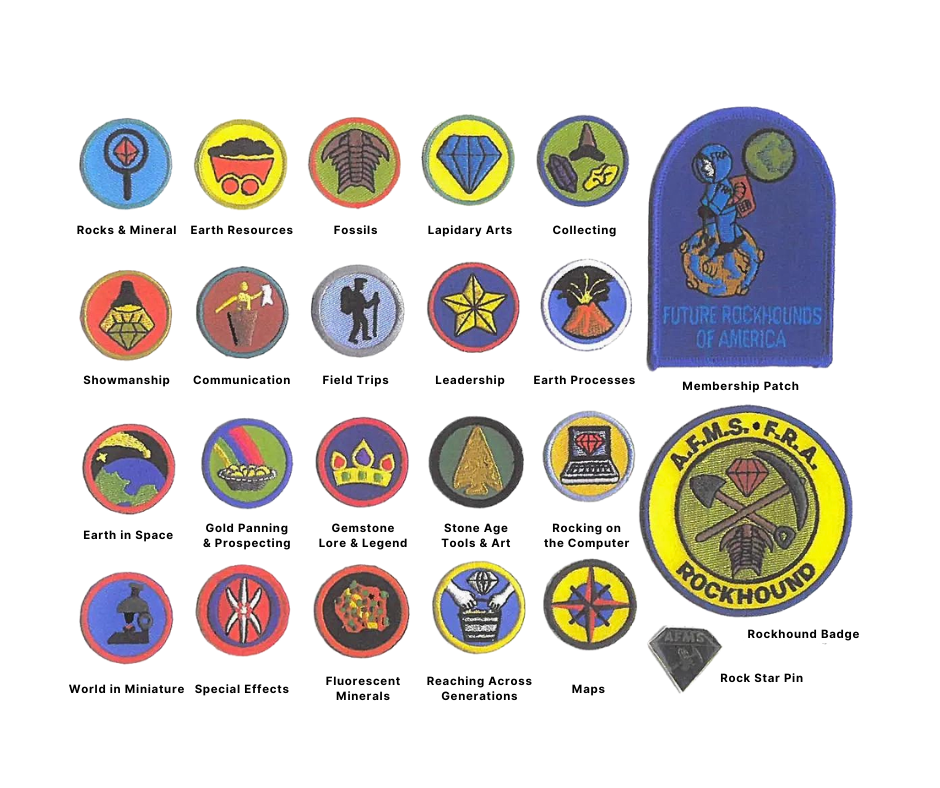
Badge Program
Future Rockhounds of America
The Badge Program is designed to reward junior members with a series of badges, patches, and a completion pin. There are easy and fun activities to earn 20 badges.
To earn a badge, junior members must complete at least 3 of the designated activities for that badge.
- Membership
- Rocks & Minerals
- Earth Resources
- Fossils
- Lapidary Arts
- Collecting
- Showmanship
- Communication
- Field Trips
- Leadership
- Earth Processes
- Earth in Space
- Gold Panning & Prospecting
- Gemstone Lore & Legend
- Stone Age Tools & Art
- Rocking on the Computer
- World in Miniature
- Special Effects
- Fluorescent Minerals
- Reaching Across Generations
- Maps
- Rockhound Badge
- Rock Star Pin
Membership
All junior members of the Roseville Rock Rollers Gem and Mineral Society automatically receive the Future Rockhounds of America Membership Badge.
Rocks & Minerals
To earn this badge, you should demonstrate how to identify many of the most common minerals and learn the basic rock types. Other activities you might choose involve learning about crystals and growing crystals and your State Rock, State Mineral, or State
Gemstone. This unit also helps you start building, curating, and maintaining your own rock and mineral collection.
- Learning the characteristics of minerals.
- Making and using a mineral ID kit.
- Building a mineral collection.
- The three rock types.
- Crystal shapes.
- Growing crystals and making geodes.
- State rocks, minerals, and gemstones.
- The elements.
- Name that mineral!
Earth Resources
These activities introduce the practical side of minerals, or how rocks and minerals are used in everyday life. We are surrounded by our mining heritage, from gypsum in walls to brass knobs on doors or clay in flowerpots and on pages of glossy magazines. Mineral resources may be divided into three classes: metals (iron, copper, nickel, etc.), nonmetals (sand, clay, limestone, salt), and fossil fuels (coal, oil, natural gas). The following activities will help you appreciate the role mining and minerals play in day-to-day life.
- Everyday uses of rocks and minerals.
- Minerals in the home.
- Collecting everyday objects and the minerals that went into them.
- Field trip to a mine or quarry.
- Field trip to a hardware store.
- Careers in the earth sciences.
Fossils
Fossils represent a merger between the sciences of geology and biology. They are at the core of the science of paleontology, or the study of past life. To study fossils, you need to learn about different forms of life on earth, the history of that life, and the geological processes that preserve life’s record. The following activities will assist you.
- The geological time chart.
- Types of fossilization and making or excavating fossils.
- The forms of life.
- Collecting fossils.
- A fossil-collecting field trip.
- Your state fossil.
- Dinosaurs.
- Fossil and dinosaur names.
As a start, you should get a book. There are many good, basic guidebooks at reasonable prices, such as Rhodes, Zim, and Shaffer’s Fossils: A Guide to Prehistoric Life, Palmer’s Pockets Fossils, Walker and Ward’s Smithsonian Handbooks: Fossils, and more. You can also find many good books like these in your public library.
Lapidary Arts
Many rocks that look dull and uninspiring on the outside harbor a gem within. Lapidary arts allow you to unlock the gleaming beauty. As with any art, successfully completing a lapidary project requires planning, guidance by an experienced mentor, and practice, practice, and more hands-on practice!
- Learning about lapidary rocks.
- Choosing a lapidary project.
- Workshop safety and maintenance. (required to earn this badge)
- Completing a lapidary project. (required to earn this badge)
- Sharing your lapidary project.
- Gemstone minerals.
To start, you should read an illustrated guidebook, such as James Mitchell’s The Rockhound’s Handbook or Pansy Kraus’s Introduction to Lapidary to learn about the various lapidary arts and to pick a project that interests you.
Collecting
Kids of all ages love to collect, and most rockhounds are pack rats at heart. We like nothing better than to assemble an assortment of rocks found on our journeys, traded with fellow collectors, and/or purchased at gem shows and rock shops or online. A proper collection, however, is more than a bunch of rocks and/or fossils simply tossed into a drawer or a box.
The value of a collection lies in its “curation,” or in the information included with each of your specimens. What is it? Where did it come from? Who collected it? What other information is unique or significant about it? The collection also should be properly organized and stored so individual specimens can be cared for and retrieved easily. Curating your treasures provides an opportunity to learn about the specimens you’ve collected while improving both the scientific and economic value of your collection. Here are some activities to help you work toward these goals:
- Building a collection.
- Cataloging and labeling your collection.
- Storing a collection.
- Displaying your collection.
- Reporting about your collection.
Showmanship
A fun part of collecting and the lapidary arts is sharing what we’ve found or made. When displaying at a local gem show, we not only get to “show off” our own collections but also to learn from others, getting advice, sharing tips, and forging bonds of friendship through mutual interests. But building an effective display involves more than getting a glass-fronted box and throwing in a bunch of rocks. Before you enter an exhibit into a show, county fair, or elsewhere, you should learn the rules of effective showmanship.
- Techniques for effective displays.
- Holding a workshop on display ideas.
- Observing and evaluating displays.
- Making your own public display. (required to earn this badge)
- Entering competition.
Communication
Part of enjoying a hobby or any other endeavor in life is sharing your love with others! They say you don’t truly “know” something until you are able to teach it to another. Here is your chance.
Learning to communicate effectively is an important life skill. If you go on to become a geologist or paleontologist, you’ll discover that science isn’t complete until your findings are written up and shared with colleagues, either in a public address or in a journal article or a book. If you go on to become a lapidary artist, you’ll find great enjoyment in sharing your skills and techniques with others as an informal mentor or as a teacher in formal workshop settings or via an online video lesson.
In short, you will find lifelong benefit to learning the basics of effective communication, both within the hobby and beyond.
- Oral report.
- Written report or newsletter article.
- Bulletin board or poster board displays.
- Corresponding with experts.
- Holding a symposium.
- Writing a field trip guide.
Field Trips
The ultimate hands-on activity is a field trip! Little can replace the thrill of discovering a gemstone or fossil. Also, a lapidary project has a lot more personal value and meaning if you collected the rough material yourself. But before you start down the road, you need to know the laws of your state and rules governing proper behavior for collectors and respecting private property. You also need to consider what you’ll be collecting and how you’ll collect it and then make plans and gather together the proper equipment. The follow activities will help you get the most out of your field trip adventure.
- Field trip etiquette, safety, & AFMS Code of Ethics. (required to earn this badge)
- Field trip planning.
- Taking a field trip. (required to earn this badge)
- Record keeping.
- The indoor field trip.
Leadership
Learning to lead is an important skill that benefits you far beyond our hobby. It will help you in school, in other clubs and associations you may wish to join, in your chosen career, and within your family and your community. As you learn from our Juniors' Advisor, we hope you will be inspired to take the initiative to become a leader yourself. As you develop and deepen your knowledge and skills gained through FRA activities, assist in teaching your fellow junior members and in helping the Juniors' Advisor to decide which activities to pursue with the group.
We also encourage you to expand your interests, activities, and leadership beyond the Rookie Rock Rollers for the benefit of your community as a whole. The following are intended to help you assume and develop a leadership role within the Roseville Rock Rollers Gem and Mineral Society and beyond.
- Becoming a junior officer.
- Organizing a group display.
- Leading a show-and-tell session or presentation.
- Planning and leading a field trip.
- Overseeing a newsletter column or an entire junior newsletter.
- Managing a youth activity booth at a local gem show.
- Mentoring.
- Recruiting.
- Fundraising.
Earth Processes
While the ground beneath our feet may seem stable, our Earth is actually an amazingly dynamic and fluid planet. Huge sections of crust called “plates” are always on the move, spreading apart from each other at some places like under the Atlantic Ocean, sliding past each other at other places like along the San Andreas Fault, crashing together at still other places to lift mountains like the Himalayas. Here you will learn about such processes, the definition of a rock, and how rocks of different sorts are formed by earth processes.
- What is a rock?
- Plate tectonics and the rock cycle.
- Igneous rocks.
- Sedimentary rocks.
- Metamorphic rocks.
- Making 3D models of geologic features related to plate tectonics.
- Earthquakes.
Earth in Space
While we usually keep our eyes on the ground when rockhounding, geology isn’t only underfoot. Our Earth is like a little blue marble floating among other marbles and big gassy balls, accompanied by metallic BBs and splinters of ice in the form of meteors and comets. On a clear night, look to the sky, and you might see streaks left by meteors burning up in our atmosphere. Sometimes, though, they make it to the earth’s surface where we can collect them and hold a piece of space in our hands. This unit will teach you about such visitors from space.
- Modeling the solar system.
- Learning about visitors from space.
- Effects of meteorites and famous craters.
- Collecting meteorites and tektites.
- Collecting meteorite dust.
- More fun measuring impact cratering.
Gold Panning & Prospecting
Gold has been highly valued throughout human history as a precious metal. This unit will teach you why. You can learn about gold as a mineral, its uses and history, and even how to become a prospector to find a gold flake or nugget of your own. In addition to gold, search for other valuables! Modern-day prospectors use metal detectors to find not just gold but also coins, artifacts, and other metal objects.
- Gold as a mineral.
- Uses of gold.
- Gold throughout history.
- Gold resources in your own state or region.
- Field trip to a gold mine.
- Panning for gold.
- Metal detecting for gold, coins, and other artifacts.
Gemstone Lore & Legend
Because they are so rare and beautiful, gemstones and precious metals have always fascinated people. We give them as gifts to mark special occasions, like a diamond ring for an engagement or a gold watch for retirement. And many cultures have invested gems with mystical, magical powers and legends. These units let you explore gemstone lore and legend and to compare legend against what contemporary science says.
- Anniversary stones.
- Birthstones and the Zodiac.
- Fabled gemstones.
- Gems in religion.
- Mysticism and minerals.
Stone Age Tools & Art
Rocks have different properties and textures. For instance, obsidian is smooth and makes flakes with razor-sharp edges, kaolin (clay) is soft and moist and easily shaped when first dug from the ground, and granite is coarse and heavy. Early humans and stone-age cultures have taken advantage of the properties of different rocks to make tools and art from them. These activities will guide you in making your own stone tools and art.
- Rocks and minerals used as tools.
- Making stone tools.
- Making stone tools and art from clay.
- Making rock art.
- Recording and interpreting rock art.
- Visiting a museum or Native American cultural center.
Rocking on the Computer
Are you “wired to learn”? The computer offers all sorts of fun, from video games to chat-rooms and instant messaging to websites where you can meet new people and learn about new things. The activities in this unit will help you use the computer to learn more about the hobby of rockhounding, to create presentations, to organize your collection, to find your way to collecting sites, and to safely connect with fellow collectors.
- Exploring the web safely and securely. (required to earn this badge)
- Reporting on favorite websites.
- Making presentations with the computer.
- Cataloging your collection electronically.
- Maps and GPS to find your way.
- Joining an online community.
World in Miniature
When we collect, we usually seek the biggest rock on the ground. But you may be surprised at what you’ll find within the world in miniature! Step through the magnifying glass and learn to collect, clean, and store the smaller wonders of the mineral and fossil world and discover truly great specimens most people walk right over.
Many people focus on cabinet specimens (ones that are fist sized). Here, you’ll learn about miniatures (specimens small enough to fit within a 2-inch cube), thumbnails (fits within the space of a 1-inch cube) and micromounts (specimens so small as to require magnification with a hand lens or microscope to identify and evaluate).
Learn not only how to collect micromounts but also how to capture images to share with others by drawing or photographing your specimens. You’ll find one thing for certain: these small specimens sure are easy to store!
- Collecting, preparing, and storing miniature minerals.
- Collecting, preparing, and storing thumbnail minerals.
- Collecting, preparing, and storing microminerals.
- Collecting, preparing, and storing miniature fossils.
- Collecting, preparing, and storing thumbnail fossils.
- Collecting, preparing, and storing microfossils.
- Collecting and classifying sand.
- Drawing or photographing microminerals, microfossils, or sand.
Special Effects
To earn this badge, you’ll need to learn about what causes certain “special effects” in some rocks and minerals. For instance, what causes “cat’s eye” effect and what rocks or minerals typically exhibit that effect? These are fun rocks to share with friends, so you should also start a collection of these special minerals and maybe hold an Amazing Mineral Magic Show!
- Magnetism.
- Triboluminescence.
- Birefringence, or double refraction.
- Chatoyancy: cat’s eye and asterism.
- Natural fiber optics, or “TV stone.”
- Phantoms and inclusions.
- Other special effects.
- The amazing mineral magic show!
Fluorescent Minerals
In this unit, we’ll explore one special effect more deeply. To earn your Fluorescent Minerals badge, you should be able to define “fluorescence” and explain why some minerals fluoresce and then name some common fluorescent minerals. You might also learn about famous localities for fluorescent minerals, collect examples and create a fluorescent display case, and learn about safety when it comes to working with ultraviolet lamps.
- What is “fluorescence” and why do some minerals fluoresce? (required)
- Famous fluorescent mineral localities.
- Collecting fluorescent minerals.
- Creating a fluorescent display case and exhibiting your collection.
- Safety with fluorescent lamps. (required to earn this badge)
- Special effects of some fluorescent minerals.
- Making fluorescent minerals with glow-in-the-dark paints.
Reaching Across Generations
As a special note and acknowledgement, this badge and its activities were developed by a pebble pup named Erica Nathan of the Coquina Kids of Florida after senior member John Withey of the Tomoka Gem & Mineral Society, passed away.
Older members in the Roseville Rock Rollers Gem and Mineral Society may sometimes seem unapproachable, but if you get to know them, you will find they are a wealth of knowledge, experience, and fun stories, just as Erica discovered. To earn this badge, strike up a friendship with a senior member in the Roseville Rock Rollers and get to know more about him or her by completing activities below.
- Spending six hours with a senior member. (required to earn this badge)
- Five things you learned from a senior member.
- The best time you spent with your senior member.
- Finding, taking, or drawing a picture of your senior member.
- A specimen that is special to your senior member.
- Making a memory box.
Maps
Our world is a complex, three-dimensional sphere. Maps “translate” our three-dimensional world into a simplified two-dimensional flat portrait. Different types of maps have been created to help us understand different things about our complex world.
To earn this badge, you should demonstrate your knowledge of maps of different types, what each type tells us, and how to use them. You might also go on to learn about making a map, where maps may be found, compasses that help us orient North and South on a map, and how to use electronic techniques involving GPS for finding your way around this Earth of ours.
- Learning about the different sorts of maps and how to read them.
- Sources of paper maps.
- Making maps.
- Using GPS.
- Maps on the Web.
Rockhound Badge
Once you’ve completed six or more of the twenty FRA badges, junior members will be eligible to receive an official “Rockhound Badge.” This signifies your graduation from a Pebble Pup or Junior Member to a true, blue Rockhound.
In earning at least six of the twenty badges, you will have demonstrated a well-rounded knowledge of the many facets of our hobby. We hope that, along the way, you will have picked up knowledge and skills you will enjoy for the rest of your life—all while having fun!
Plus, you name will be posted to an “Honor Roll” list on the Kids Corner section of the AFMS web site: AFMS Juniors
Rock Star Pin
Once you’ve completed all twenty FRA activity badges, you will be eligible to receive an official AFMS cloisonné pin and your name will be posted to a “Rock Stars” list on the Kids Corner section of the AFMS web site: AFMS Juniors
As with earning your Rockhound Badge, the American Federation of Mineralogical Societies offers special congratulations upon entering the elite ranks of the Rock Stars!
Crack the News
Introducing Crack the News, an AFMS newsletter by kids for kids who love rocks, minerals, and fossils. This exciting publication features stories, articles, and discoveries shared by young enthusiasts from all over. It's a great way for junior members to stay connected, learn new things, and even contribute their own content!
Contact Information
-
Want to learn more about the Rookie Rock Rollers program? Contact our Juniors Director, Kelsey Guymon or visit our Contact Page.
We look forward to welcoming your rock enthusiast to our group! -
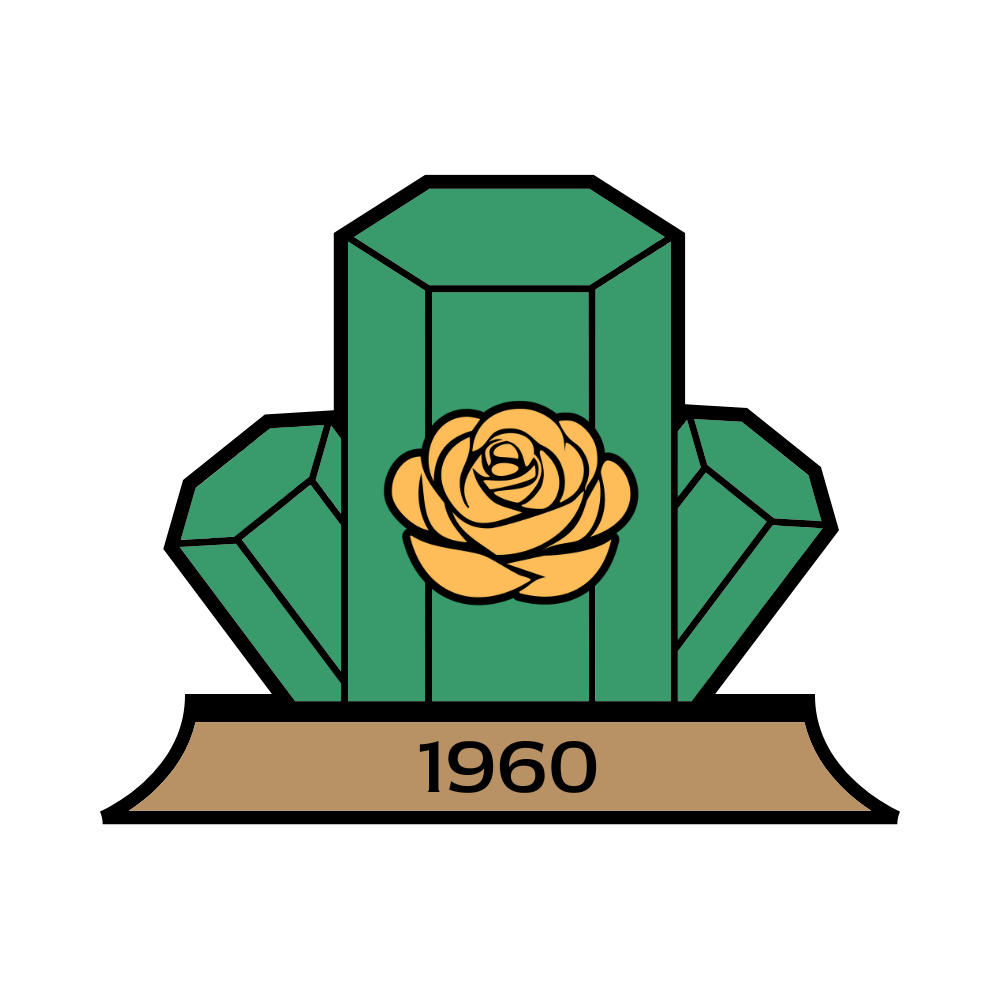
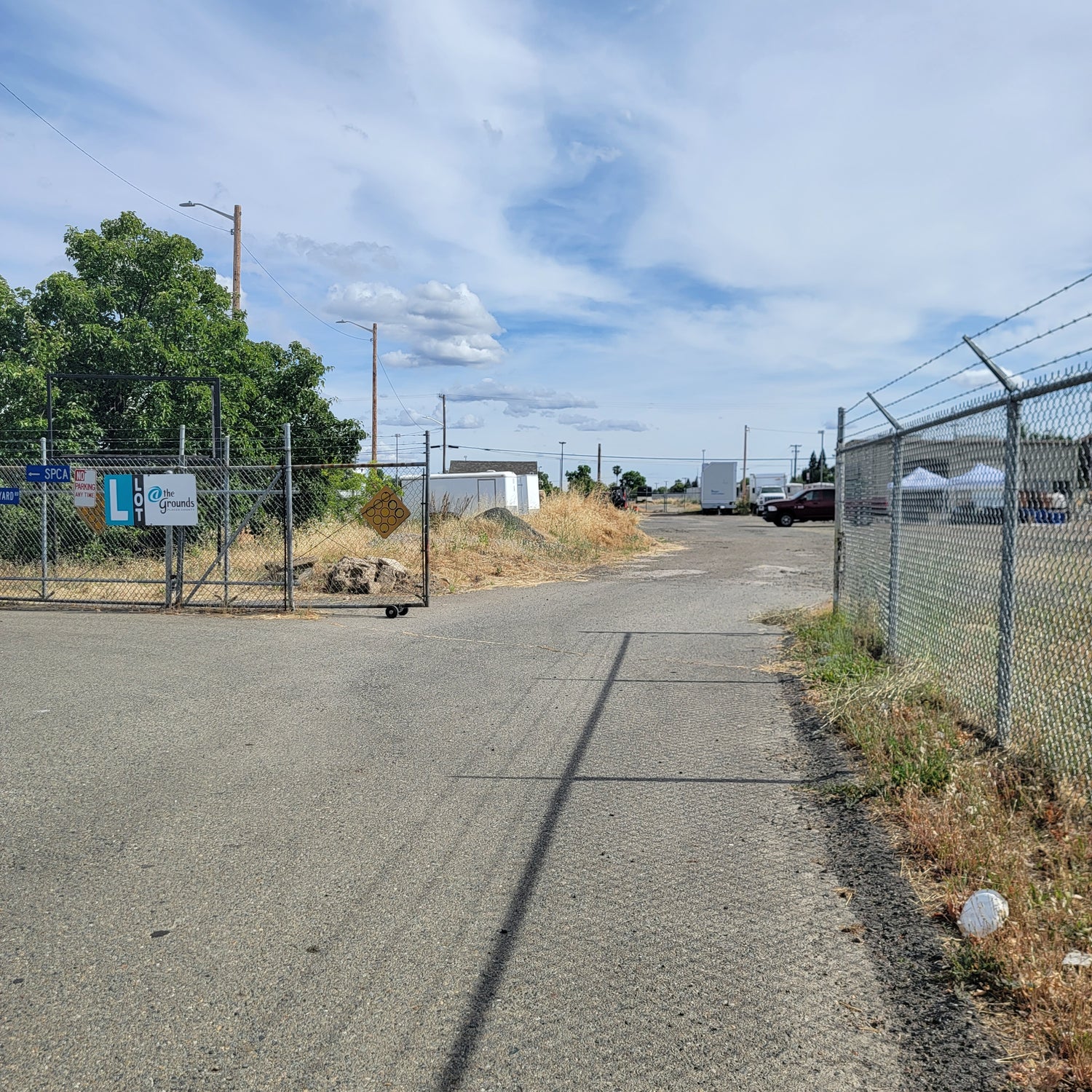
Location
Roseville Rock Rollers Lapidary Shop
L LOT @the Grounds
